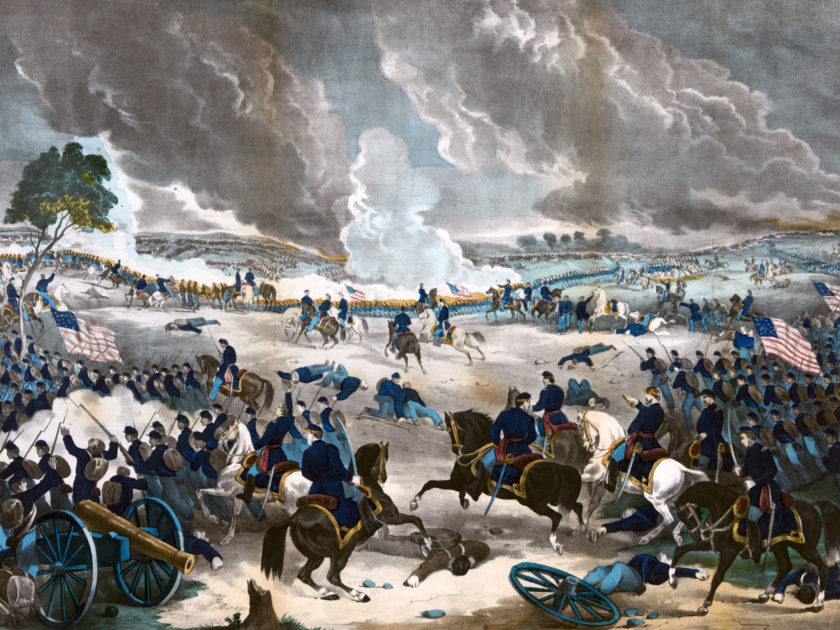By Michael J. McAfee
By the early summer of 1863, most of the unusually dressed soldiers in the Army of the Potomac had been fairly well shaken out in the throes of hard combat. Gone were the Bersaglieri uniforms of the 39th New York, the sky blue jackets of the 62nd Pennsylvania and the lances of the 6th Pennsylvania Cavalry. Some regiments and brigades, however, retained their original distinctive dress or adornments as the army marched north to their fateful encounter at Gettysburg.
The first Yankees to draw conspicuous attention to themselves by their appearance in battle were probably the men of the famed Iron Brigade. They had continued to wear the black felt 1858 uniform or Hardee hats from earlier service. Now, wearing their battered and almost unrecognizable dress headgear, these men of the First Corps alerted the Confederates that the Army of the Potomac was on the field, eliciting cries from the enemy line, “Here are those damned black-hat fellers again…”
As the first day’s battle progressed, the 84th New York Infantry, or as they preferred to be known, the 14th New York State Militia, fought at the Railroad Cut along with the men of the Iron Brigade. They wore a later version of their quasi-chasseur militia uniform, featuring blue cut-away jackets and red trousers. As their regimental historian noted, the men of the 14th vowed to fight in their red pants.
On the second day at Gettysburg, the Pennsylvania Bucktail Brigade performed noble service, their forage caps adorned with deer tails or fur—small distinctive notes added to their standard federal uniforms, but highly important for their esprit de corps. Another equally important small detail was an orange ribbon worn on the coats of men of the 124th New York, also known as the “Orange Blossoms.” In their gallant defense of Devil’s Den that afternoon, the 124th lost its colonel and major, as well as dozens of other officers and men. Soon, the sky blue “Turco” uniforms of the 146th New York materialized on nearby Little Round Top, as men of the Fifth Corps repulsed the Confederate attempt to flank the Union Army. Meanwhile, the blue and red full Zouave uniforms of the 114th Pennsylvania littered the fields around the Peach Orchard.
On the third day, one wonders if any of the men of the 72nd Pennsylvania retained their zouave jackets, as seen in their regimental monument at the high water mark of Pickett’s Charge. Similarly, did any of Berdan’s Sharpshooters retain elements of the rifle green uniforms or were any men of the 10th New York Infantry still in partial Zouave dress?
We do not have the answers. But what we do know is that the soldiers of several Union regiments and brigades felt the power of distinctive dress at Gettysburg.
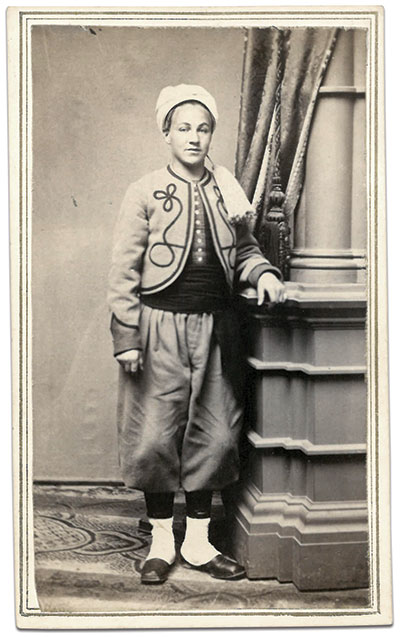
Alfred H. Palmer of the 146th New York Infantry dressed in his sky blue “Turco” uniform. Turcos were native North African soldiers in the French Colonial Forces, who were given light blue zouave uniforms to distinguish them from French soldiers dressed in blue and red zouave uniforms.
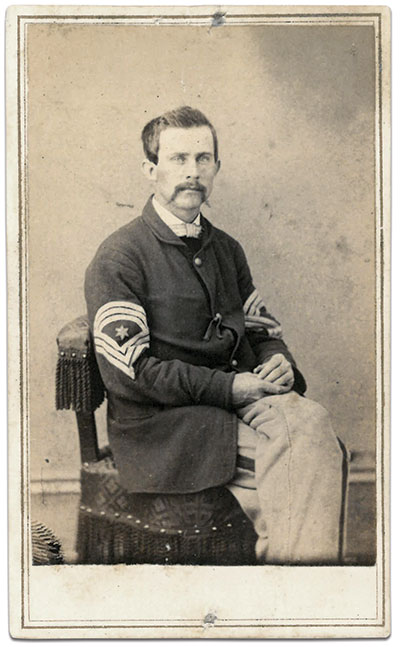
Moses P. Ross of the 124th New York Infantry was with the regimental staff on July 2 as his comrades held off Confederates at Devil’s Den. His piece of orange ribbon is attached to the second button from the top of his sack coat, which also bears the chevrons of a chief or principal musician.
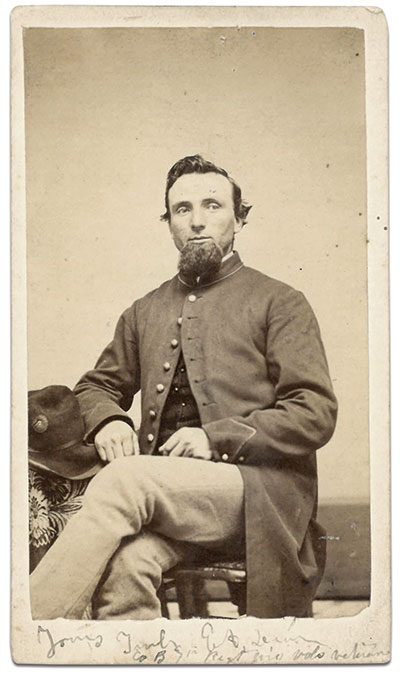
Elisha A. Dean of the Iron Brigade’s 7th Wisconsin Infantry served his entire four-year enlistment as a private without major incident. Here, his “black hat” rests beside him with First Corps badge and numeral 7.
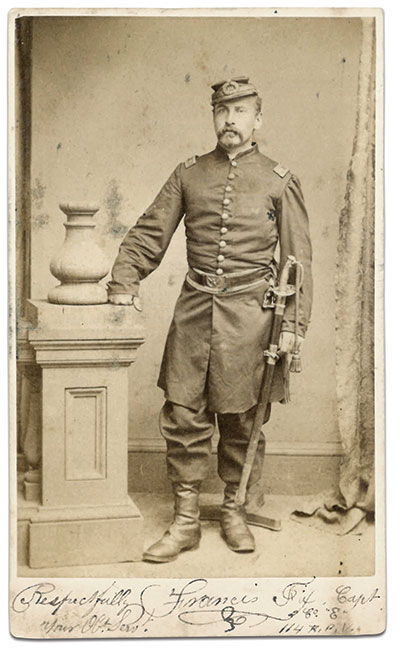
Capt. Francis Fix of the 114th Pennsylvania Infantry, or “Collis’ Zouaves,” suffered a wound in the fight at the Peach Orchard on July 2. His red cap bears the numeral 114 in a wreath and his trousers were likely red like those of his men.
MI Senior Editor Michael J. McAfee is a curator at the West Point Museum at the United States Military Academy, and author of numerous books. He has curated major museum exhibitions, and has contributed images and authoritative knowledge to other volumes and projects. The images reproduced here are from his collection.
SPREAD THE WORD: We encourage you to share this story on social media and elsewhere to educate and raise awareness. If you wish to use any image on this page for another purpose, please request permission.
LEARN MORE about Military Images, America’s only magazine dedicated to showcasing, interpreting and preserving Civil War portrait photography.
VISIT OUR STORE to subscribe, renew a subscription, and more.

